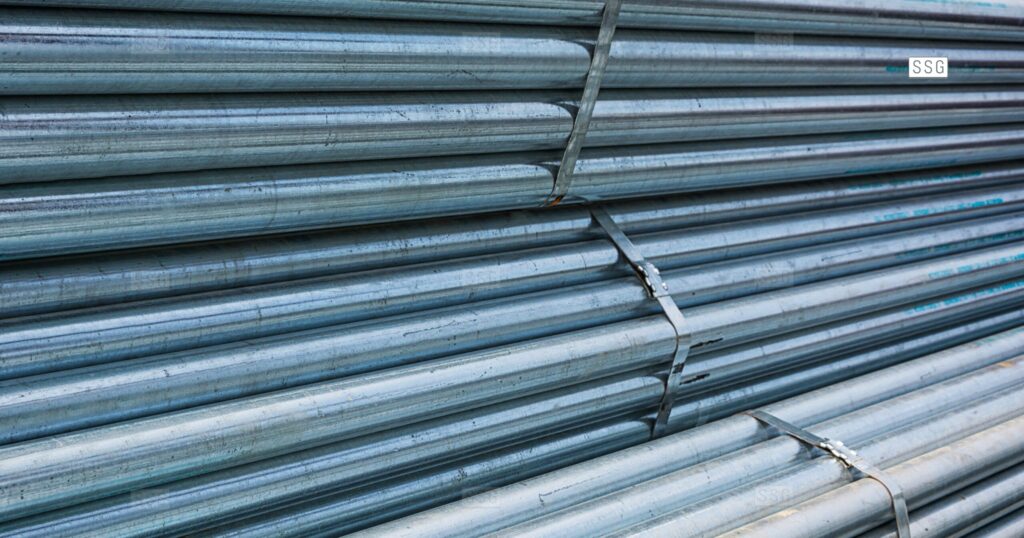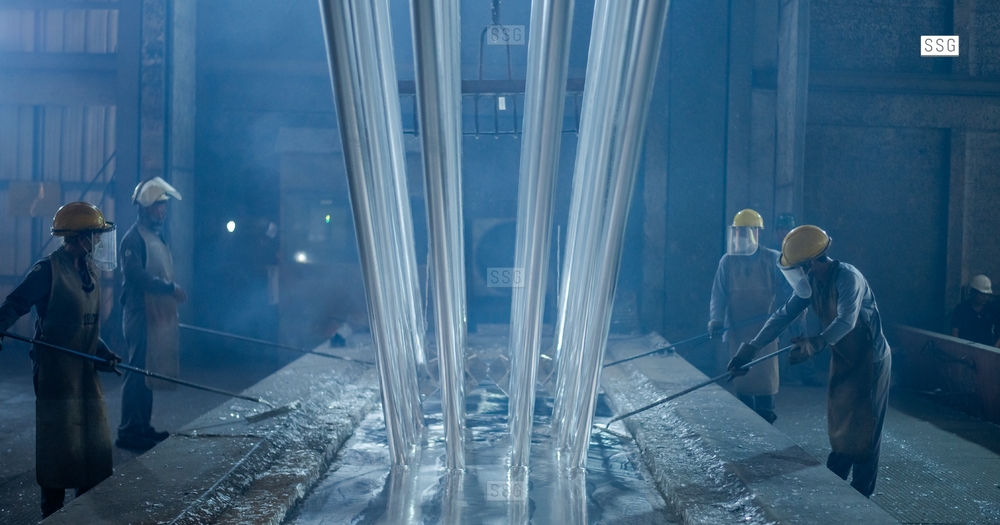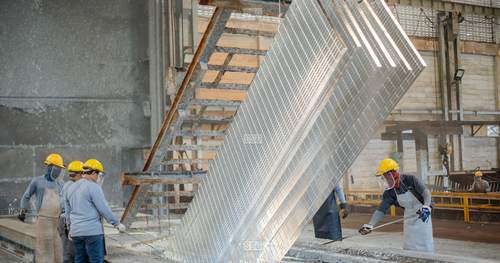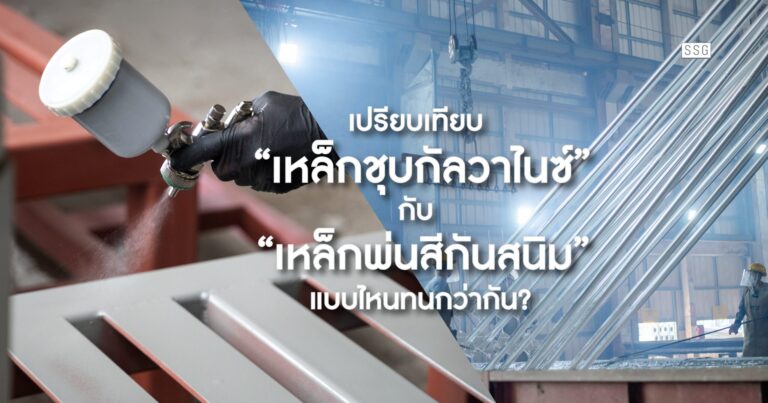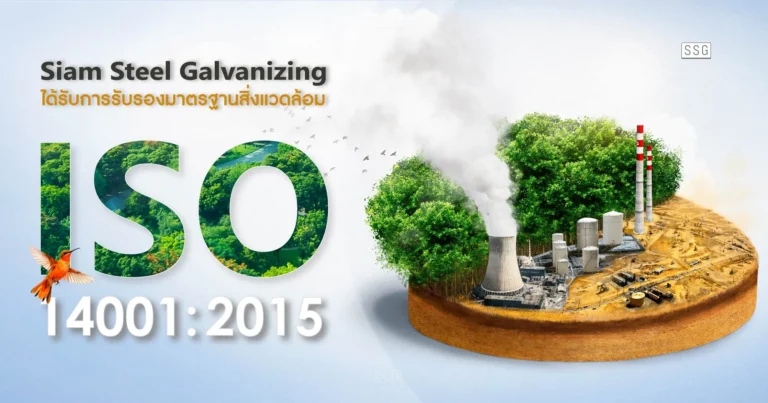When it comes to rust prevention, whether it’s for steel bars, steel pipes, box steel, or C-channel steel, many people are often uncertain about which method is better — anti-rust painting or galvanizing.
This article will help you understand the differences, advantages, and limitations of each method, so you can choose the most cost-effective and environment-appropriate corrosion protection for your steel applications.
What Is Galvanized Steel?
Galvanized steel is steel that has undergone the hot-dip galvanizing process to protect it from rust and corrosion. In this process, the steel is immersed in a bath of molten zinc, allowing the zinc to coat and bond firmly to every surface — both inside and out.
This protective zinc coating typically ranges from 50 to 250 microns in thickness, providing long-lasting corrosion resistance that can extend the steel’s lifespan for over 70 years.
Advantages of Galvanized Steel
-
Excellent Rust Protection — Long Lifespan Over 70 Years
Galvanized steel provides the highest level of corrosion resistance, ensuring durability and long service life even in harsh environments. -
Low Maintenance and Cost-Effective
Unlike painted or anti-rust coated steel, galvanized steel requires no repainting or re-coating, helping reduce long-term maintenance costs. -
Outstanding Weather Resistance
It can withstand sunlight, rain, humidity, and outdoor exposure without losing its protective properties. -
Thick Zinc Coating (50–250 Microns)
The thick and strong zinc layer makes galvanized steel impact-resistant and durable under heavy use. -
Pre-Treated Surface for Stronger Adhesion
The steel surface is carefully cleaned and prepared before galvanizing, ensuring a smooth, even, and long-lasting zinc coating. -
Full Internal and External Protection
The hot-dip galvanizing process coats even the internal surfaces, preventing hidden rust and extending the steel’s lifespan from the inside out.
Disadvantages of Galvanized Steel
-
Slightly Higher Cost Compared to Painted Steel
The hot-dip galvanizing process involves higher production and material costs than anti-rust painting, making galvanized steel a bit more expensive initially. However, it often proves more cost-effective in the long run due to reduced maintenance needs. -
Limited Color Options
The surface of galvanized steel naturally appears in silver–gray tones. Unlike painted steel, it cannot be customized with different colors or finishes, which may limit aesthetic flexibility for decorative applications.
What Is Anti-Rust Painted Steel?
Anti-rust painted steel refers to steel that is coated with a protective paint layer designed to prevent rust and corrosion. This coating may include a primer (anti-rust base coat) and/or a topcoat, which helps reduce the steel’s direct exposure to air and moisture.
This method is commonly used in general construction and indoor applications, such as roof structures, fences, gates, window grilles, and building frameworks, as well as in automotive parts.
Because it requires less preparation, equipment, and space, anti-rust painting is a quick and convenient process that can be easily done with materials readily available on the market.
Advantages of Anti-Rust Painted Steel
-
Lower Cost Compared to Galvanizing
Painting is a more affordable rust protection method with lower initial investment. -
Quick and Easy Application
The process is simple, requires minimal setup, and can be completed in a short time. -
Customizable Colors
You can choose any color shade or finish to match your design preferences. -
Easily Accessible Equipment and Materials
Paint, brushes, and spray tools are widely available on the market. -
Requires Less Space for Application
Painting can be done in limited areas and doesn’t require a large setup or disassembly. -
No Need for Reassembly
Steel parts can be painted directly without removing or rebuilding structures.
Disadvantages of Anti-Rust Painted Steel
-
Shorter Lifespan (Typically 1–3 Years)
The durability depends on environmental exposure — paint can degrade faster under outdoor conditions. -
Peeling and Rust Formation
Paint can crack, peel, or blister when exposed to sunlight, rain, or moisture, leading to rust. -
Requires Frequent Maintenance and Repainting
To maintain protection, regular repainting is needed, which increases long-term costs. -
Cannot Fully Cover Internal Surfaces
Paint cannot reach inside hollow steel sections unless disassembled and repainted before welding. -
Risk of Internal Rusting
Hollow or enclosed steel structures may rust from the inside, as paint cannot provide full internal protection.
Galvanized Steel vs Paint-Coated Steel: Which is Better for Rust Protection?
| Hot-dip galvanizing | Anti-rust painting | |
|---|---|---|
| Lifespan | More than 70 years | 1 - 3 years |
| Rust protection | Excellent corrosion protection — achieved through proper steel surface preparation before coating and a comprehensive galvanizing process that ensures full coverage inside and outside the steel structure. | Moderate corrosion protection — it depends on the quality of the anti-rust paint and the skill of the applicator. Poor surface preparation or uneven coating can reduce its effectiveness and shorten the steel’s lifespan. |
| Weather durability | Highly resistant to sunlight, rain, and humidity | Easily fades and flakes under direct sunlight |
| Maintainance | Virtually maintenance-free | Requires regular maintenance |
| Long-term cost | Low life-cycle cost | High maintenance and repainting costs |
| Appearance | Smooth, silver-gray appearance | Available in various colors, customizable finish |
Galvanized Steel vs Painted Steel: Which One Is More Durable?
If your goal is durability, rust prevention, and low maintenance, the clear winner is galvanized steel.
With its zinc coating firmly bonded to the steel surface, galvanized steel provides exceptional corrosion protection that can last over 70 years, even in harsh environments such as coastal areas, or outdoor locations exposed to sun, rain, and humidity.
In contrast, anti-rust painted steel is more suitable for temporary use, indoor applications, or projects with limited budgets. It offers basic rust resistance and aesthetic flexibility but requires repainting and periodic maintenance over time.
Siam Steel Galvanizing Co., Ltd.
Our factory is equipped with a state-of-the-art hot-dip galvanizing system featuring a large zinc bath imported from Australia, recognized as one of the largest galvanizing tanks in Thailand.
This enables us to handle extra-long steel structures efficiently while maintaining strict compliance with international standards such as ASTM A123, BS 729, AS/NZS 4680, JIS H 8641, and BS EN ISO 1461.
With a production capacity of over 13,000 tons per month, Siam Steel Galvanizing is among Thailand’s leading hot-dip galvanizing manufacturers, offering high-quality corrosion protection and long-lasting durability for all types of steel structures.
If you are unsure whether galvanizing is suitable for your project, you can contact us for free consultation:
Phone : (+66) 02-705-8755
E-mail: ssgl@ssggalvanizing.com
Official Line: @ssggalvanizing (or click to add @LINE)
#SSG #SiamSteelGalvanizing
#HotDipGalvanizing #GalvanizedSteel #InternationalStandard #ZincCoating #GalvanizedSteelGrating

